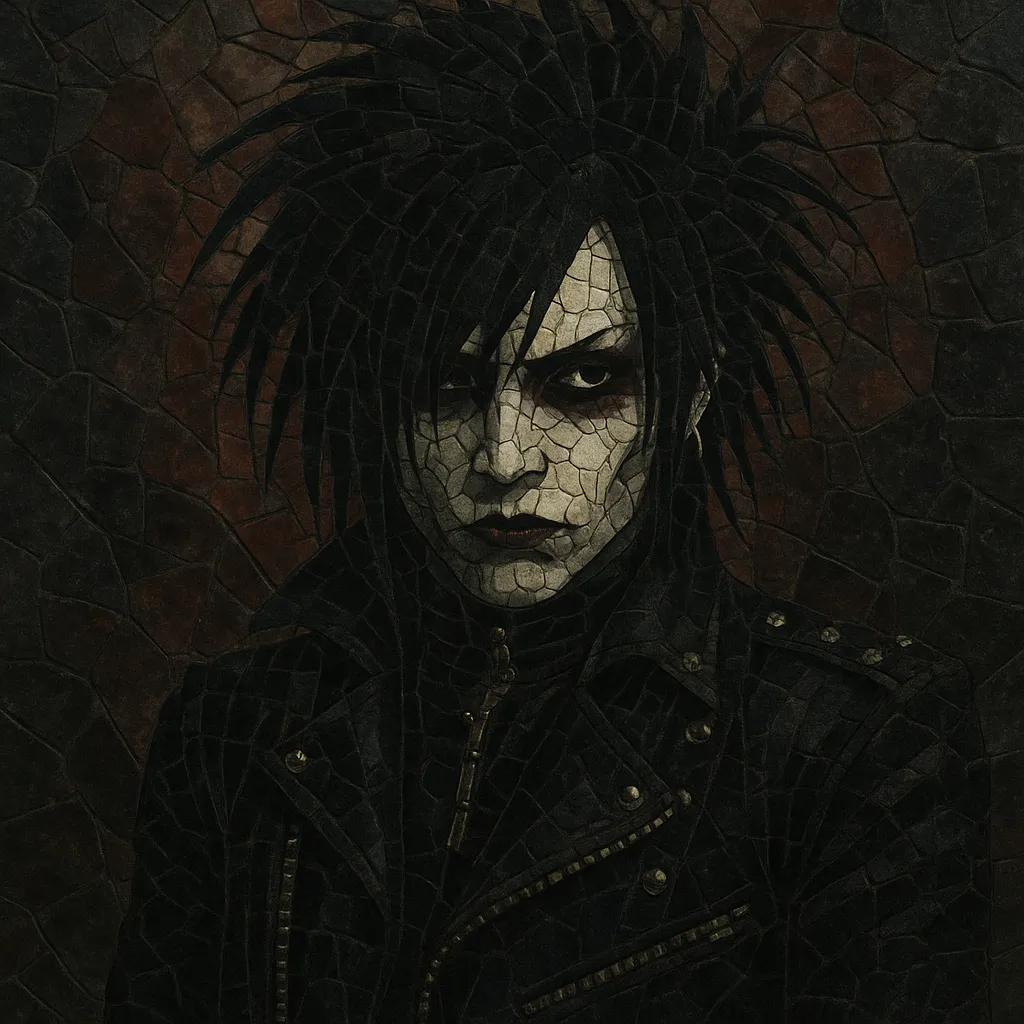Kote kei (コテ系) is a "classic" or "thick" branch of visual kei that emphasizes dark aesthetics, heavy guitar-driven arrangements, dramatic vocals, and melodramatic, often gothic or nihilistic themes. The name comes from "kote-kote," a Japanese colloquialism suggesting something dense, heavy, and unmistakably stylized.
Musically, it blends alternative and heavy metal with hard rock and gothic rock textures: twin-guitar riffs, drop-tuned chugs, minor-key melodies (often using harmonic minor color), and a rhythm section that can pivot from stomping mid-tempos to blast-leaning intensity. Vocals swing between soaring, emotive choruses and harsh screams or growls, underlined by theatrical delivery.
Visually, kote kei is unmistakably visual kei: elaborate makeup and hair, black leather or military/goth-inspired attire, and a brooding stage presence. It stands as a darker, heavier counterpart to brighter offshoots, and it set the template many 2000s visual kei bands iterated on.
Kote kei coalesced in the late 1990s inside Japan’s visual kei ecosystem, itself rooted in the late-1980s foundations laid by bands like X JAPAN and BUCK-TICK. As visual kei diversified, a contingent emphasized darker imagery, heavier riffing, and overt melodrama—traits that fans began to shorthand as "kote kei" (the thick, classic style).
In the early 2000s, kote kei’s signatures—drop-tuned twin guitars, intense yet melodic choruses, and grim, gothic-leaning visuals—became a dominant strain in the scene. Independent labels and management companies (e.g., Free-Will, Matina, UNDER CODE PRODUCTIONS, and PS Company) nurtured tours, samplers, and magazine exposure (SHOXX, Cure), helping the style proliferate. Venues such as Takadanobaba AREA and Ikebukuro CYBER became hubs for kote-leaning bills.
As the 2000s progressed, kote kei cross-pollinated with metalcore, post-hardcore, and industrial textures, giving rise to even heavier "loud kei" acts, while a contrasting, brighter pop-punk-influenced strain (often contrasted with kote) emerged in parallel. Despite stylistic branching, kote kei’s dark theatricality and melodicism remained a reference point for newer bands.
While the broader visual kei market contracted in the 2010s, kote kei’s aesthetics and songwriting tropes continue to inform newer groups, reunion events, and nostalgia circuits. Archival uploads, streaming platforms, and social media have introduced international audiences to the style’s hallmark mixture of heaviness, melancholy, and grandiose hooks.


